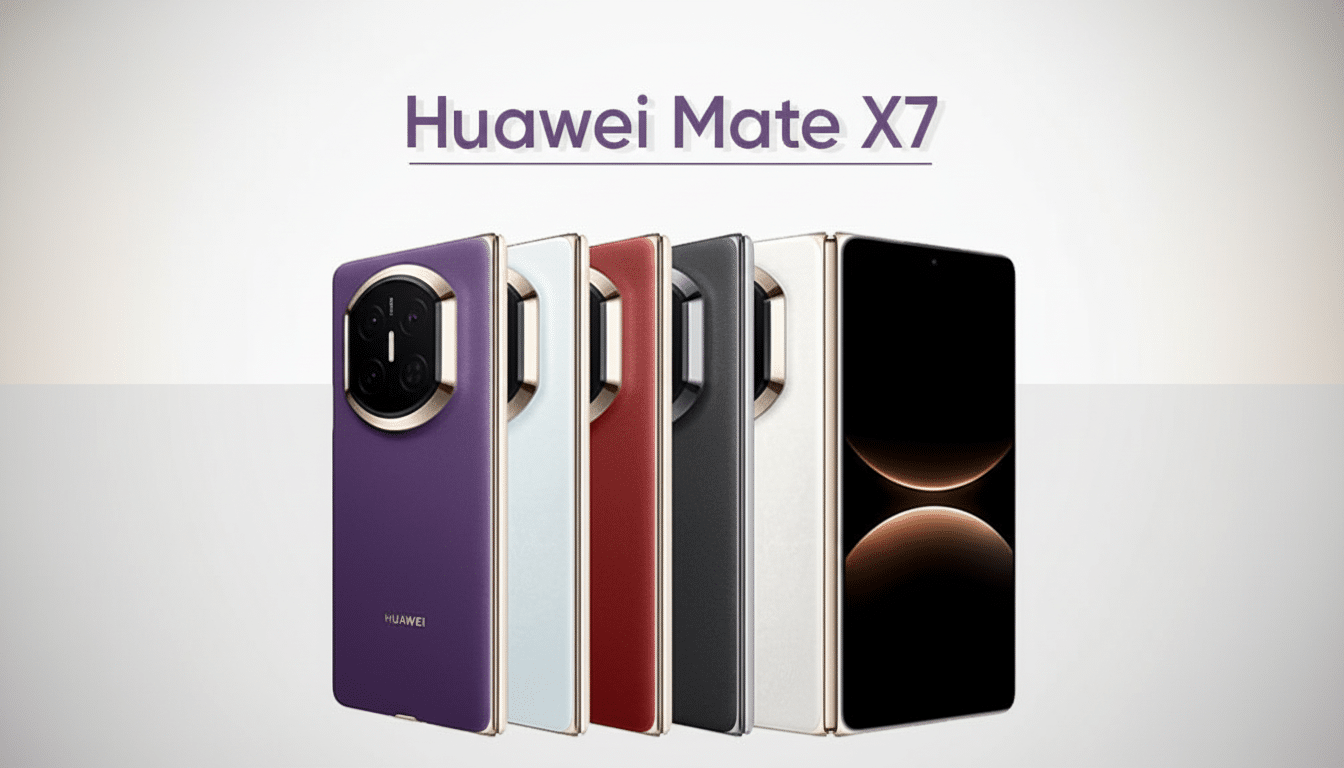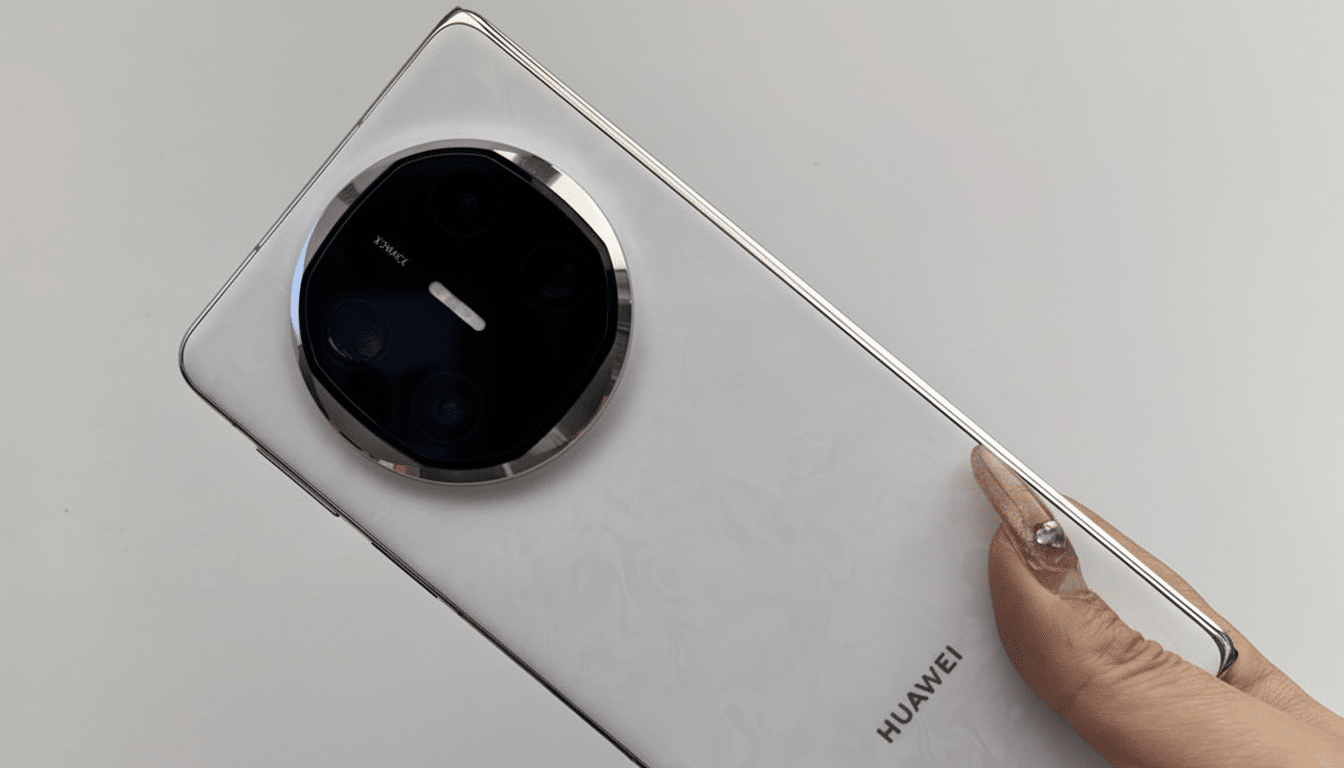Huawei has just put the foldable world on notice. The Mate X7 comes to China bearing dual IP58 and IP59 ingress protection ratings, a combination of durability that exceeds the Galaxy Fold 7’s IP48 rating and sets a new bar for how robust a book-style foldable can be.
Why IP58 and IP59 ratings matter for foldables
In the IEC 60529 standard, the first number deals with dust, while the second denotes water. IP58 indicates that the gadget is dust-proof and can stay submerged for long periods of time. IP59 provides protection against high-pressure jets of water. In reality, that’s more difficult than IP48 because “4” is protection only against objects larger than 1 millimeter and the “8” is for immersion — with no dust conditions stipulated.

The difference is palpable to owners. An IP59 protection rating covers use cases such as rainstorms, rinsing, or even accidental irrigation from intense spray — uses that go beyond your common splash-proof guarantee. And it suggests that the hinge and chassis sealing have improved over many of the Western-market foldables available today.
It’s not just marketing. Lab certifications are audited to uniform tests and manufacturers must design port seals, hinge gaps, membranes, and drain paths accordingly. That doesn’t make a foldable invincible to sand or drops, but the Mate X7’s double scores identify a significant step toward real-world sturdiness.
Hardware upgrades back the toughness story
The durability news aside, the Mate X7 does offer a well-rounded spec sheet. The external display expands to 6.49 inches at 2,444 × 1,080, and the internal panel now tops out at 8 inches at 2,416 × 2,210. Both are LTPO with adaptive refresh ranging from 1–120Hz and 1,440Hz PWM dimming, a combination meant to accommodate smooth visuals while minimizing flicker sensitivity.
Huawei trimmed weight to a claimed 236 g, excellent for a large-format foldable. On the inside, the new Kirin 9030 chip fires up to 16GB of RAM and up to 1TB of storage, handling HarmonyOS 6. The name doesn’t make any mention of the CPU/GPU architecture, but the platform itself suggests new connectivity and AI capabilities to complement its latest software.
Its camera system receives a noteworthy tweak as well: a 50MP RYYB telephoto with OIS and an f/2.2 aperture at 3.5x optical zoom takes the place of a former 48MP unit.
It combines a 50MP primary camera (with a variable aperture from f/1.49 to f/4) with OIS, a 40MP RYYB ultrawide, and a secondary‑generation color sensor. On both the cover and inner screens, there are 8MP selfie cameras.

Battery size grows to 5,600 mAh with 66W wired and 50W wireless charging. That’s about a 27% hike over the 4,400 mAh class average of many book-style rivals and caters to one of the genre’s enduring pain points: endurance under heavy multitasking and large-screen use.
How it stacks up to the Galaxy Fold 7 in practice
Huawei’s foldable ups the ante a bit with IP58 and IP59 compared to the Fold 7’s IP48, particularly when it comes to dust exposure and pressurized water. That puts things into perspective — 4 to 5 on solids protection is the difference between basic shutout for particle entry and a seal engineered specifically against grime. It is the type of upgrade durability testers and repair experts have been calling for over many years as foldables make their way out of the lab and onto hiking trails, commuter pockets, and kitchen countertops.
Naturally, ingress ratings don’t protect against all the things you might throw at your devices on a daily basis. Inner displays on modern foldables still make use of protective layers that remain easily scratched compared to traditional glass; normal Mohs tests are showing 2–3 softness levels. Drop durability will still be a factor of hinge geometry, frame materials, and the cover glass. However, from a technology-to-technology standpoint, the Mate X7’s sealing is actually a real step forward, and it will be putting pressure on other manufacturers to start really getting dust protection closer to that IP6X threshold.
Market watchers have been bracing for such a move. Chinese brands have led a lot of the recent innovation in hinges, materials, and battery systems, according to analysts at Counterpoint Research, which have pushed incumbent manufacturers to iterate more quickly. The Mate X7’s scores lay bare how stark that dynamic is.
Price, colors, and early availability for Huawei Mate X7
The Mate X7 comes in Black, Purple, White, Light Blue, and Red. The 12GB RAM and 256GB storage variant is the least expensive model you can get, with options up to 16GB and 1TB for power users. It starts at CNY 12,999, which converts to approximately $1,830 before taxes or carrier discounts.
There is no word on international availability yet, but Huawei has started on home turf. If history is any guide, global availability will depend on individual regional software and network concerns, though the message has been sent: when it comes to durability, the Mate X7 has surged ahead and every maker of foldables must account for that.

